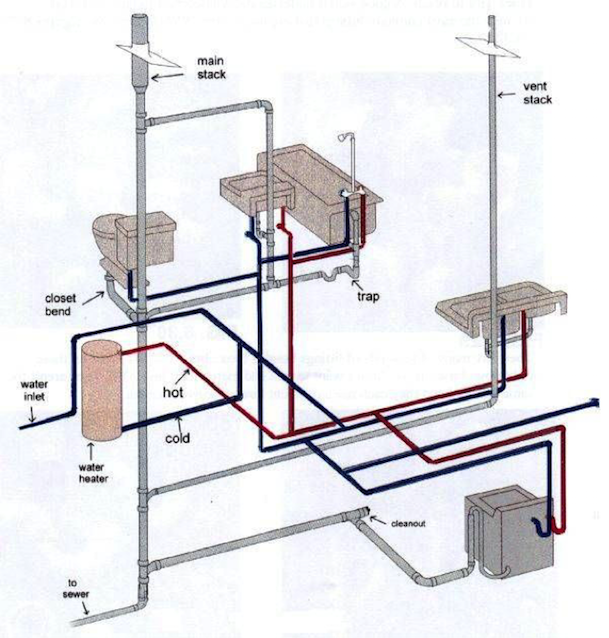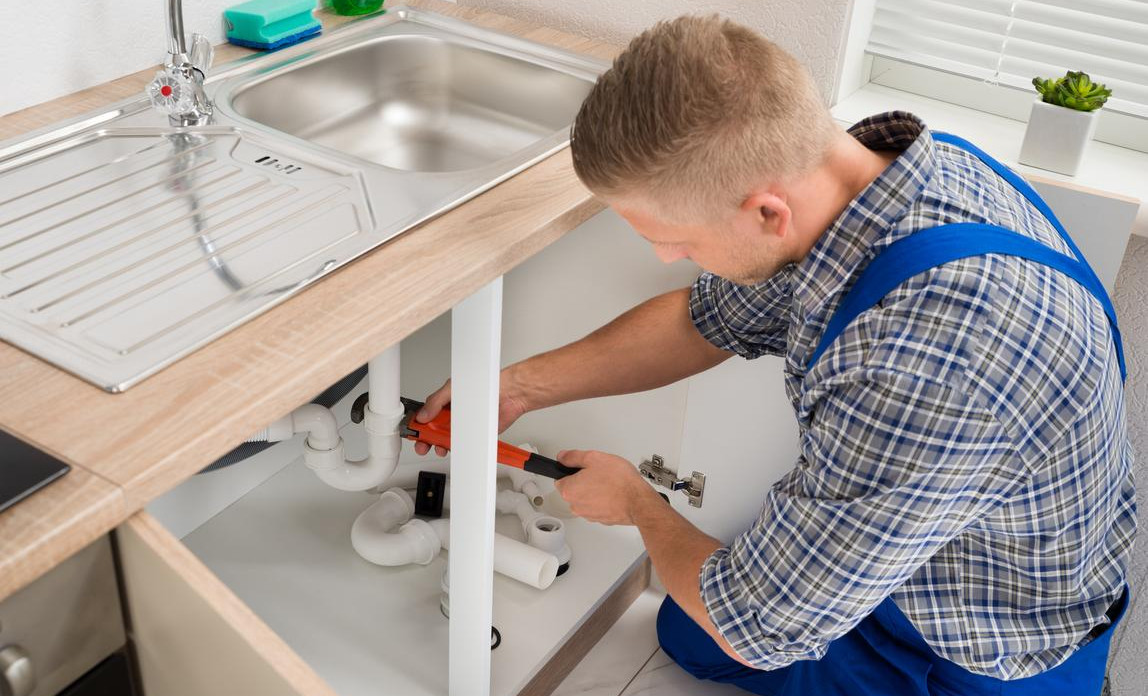The Main Elements of Your House's Plumbing System
The Main Elements of Your House's Plumbing System
Blog Article
The writer is making a number of good points about Understanding Your Home's Plumbing Anatomy as a whole in the article down below.

Recognizing exactly how your home's plumbing system functions is crucial for each property owner. From delivering clean water for alcohol consumption, cooking, and bathing to securely eliminating wastewater, a well-kept plumbing system is important for your family's health and convenience. In this extensive overview, we'll discover the complex network that makes up your home's pipes and deal tips on upkeep, upgrades, and handling typical concerns.
Introduction
Your home's pipes system is more than simply a network of pipelines; it's an intricate system that ensures you have accessibility to clean water and reliable wastewater removal. Understanding its parts and how they interact can help you prevent expensive repair services and ensure whatever runs efficiently.
Basic Components of a Plumbing System
Pipelines and Tubing
At the heart of your pipes system are the pipes and tubing that lug water throughout your home. These can be made of different products such as copper, PVC, or PEX, each with its benefits in terms of toughness and cost-effectiveness.
Components: Sinks, Toilets, Showers, etc.
Fixtures like sinks, commodes, showers, and bathtubs are where water is used in your home. Comprehending how these fixtures link to the pipes system helps in diagnosing issues and intending upgrades.
Shutoffs and Shut-off Points
Valves manage the circulation of water in your pipes system. Shut-off valves are essential throughout emergency situations or when you require to make repair services, permitting you to separate parts of the system without interfering with water circulation to the entire house.
Water Supply System
Main Water Line
The primary water line links your home to the local water or a private well. It's where water enters your home and is dispersed to numerous components.
Water Meter and Pressure Regulatory Authority
The water meter actions your water use, while a stress regulator makes sure that water streams at a risk-free pressure throughout your home's plumbing system, preventing damages to pipelines and components.
Cold Water vs. Hot Water Lines
Understanding the distinction in between cold water lines, which provide water straight from the primary, and hot water lines, which carry heated water from the hot water heater, assists in repairing and preparing for upgrades.
Drain System
Drain Pipes Pipeline and Traps
Drain pipes carry wastewater away from sinks, showers, and commodes to the drain or septic tank. Traps avoid sewer gases from entering your home and also trap debris that might trigger blockages.
Ventilation Pipes
Ventilation pipes allow air into the water drainage system, stopping suction that might slow down drain and cause traps to empty. Proper ventilation is vital for maintaining the stability of your plumbing system.
Significance of Appropriate Water Drainage
Ensuring correct water drainage protects against back-ups and water damages. Consistently cleaning up drains pipes and preserving catches can stop expensive repair services and prolong the life of your plumbing system.
Water Furnace
Types of Water Heaters
Water heaters can be tankless or traditional tank-style. Tankless heaters heat water on demand, while tanks keep heated water for instant usage.
Updating Your Pipes System
Factors for Updating
Updating to water-efficient fixtures or replacing old pipes can improve water quality, decrease water bills, and boost the value of your home.
Modern Plumbing Technologies and Their Benefits
Discover modern technologies like smart leak detectors, water-saving commodes, and energy-efficient hot water heater that can save money and reduce ecological impact.
Price Factors To Consider and ROI
Determine the upfront prices versus lasting financial savings when taking into consideration plumbing upgrades. Several upgrades spend for themselves with reduced energy expenses and fewer repairs.
Just How Water Heaters Link to the Plumbing System
Comprehending how hot water heater link to both the cold water supply and hot water circulation lines assists in identifying issues like not enough warm water or leaks.
Upkeep Tips for Water Heaters
On a regular basis flushing your hot water heater to eliminate sediment, examining the temperature settings, and inspecting for leakages can extend its life-span and enhance power effectiveness.
Typical Plumbing Concerns
Leaks and Their Reasons
Leaks can take place because of maturing pipes, loosened fittings, or high water stress. Addressing leaks quickly prevents water damages and mold and mildew growth.
Obstructions and Obstructions
Clogs in drains pipes and toilets are often brought on by flushing non-flushable items or a build-up of grease and hair. Using drainpipe screens and bearing in mind what decreases your drains pipes can prevent blockages.
Signs of Pipes Issues to Look For
Low water stress, slow drains pipes, foul odors, or uncommonly high water costs are signs of possible plumbing troubles that should be addressed immediately.
Pipes Maintenance Tips
Routine Examinations and Checks
Schedule yearly pipes examinations to catch problems early. Try to find signs of leaks, rust, or mineral build-up in taps and showerheads.
DIY Maintenance Tasks
Basic jobs like cleansing faucet aerators, checking for bathroom leakages using color tablet computers, or insulating subjected pipelines in cool climates can avoid significant pipes concerns.
When to Call a Professional Plumbing
Know when a pipes concern needs expert experience. Trying complicated repair services without correct knowledge can lead to more damage and higher repair service prices.
Tips for Lowering Water Usage
Simple practices like repairing leakages immediately, taking shorter showers, and running full tons of laundry and recipes can preserve water and lower your utility bills.
Eco-Friendly Plumbing Options
Consider sustainable plumbing materials like bamboo for flooring, which is durable and environmentally friendly, or recycled glass for counter tops.
Emergency Preparedness
Steps to Take During a Plumbing Emergency situation
Know where your shut-off shutoffs lie and just how to turn off the water supply in case of a burst pipe or major leakage.
Relevance of Having Emergency Situation Calls Helpful
Keep contact information for local plumbers or emergency situation solutions easily offered for fast action throughout a pipes dilemma.
Environmental Effect and Conservation
Water-Saving Fixtures and Devices
Mounting low-flow faucets, showerheads, and bathrooms can significantly reduce water use without giving up efficiency.
DIY Emergency Fixes (When Relevant).
Momentary repairs like using air duct tape to patch a leaking pipeline or putting a bucket under a trickling tap can reduce damages up until a professional plumber gets here.
Final thought.
Comprehending the anatomy of your home's pipes system empowers you to keep it efficiently, conserving time and money on repairs. By adhering to routine maintenance regimens and staying informed concerning contemporary pipes innovations, you can ensure your pipes system operates effectively for several years to find.
HOW YOUR PLUMBING SYSTEM WORKS
Which Pipes Do What?
Blue lines = fresh water supply entering the building Red lines = hot water supply entering the building Grey lines = pipes carrying waste away from the building and venting pipes carrying gases away from the building (through the roof) YOUR MAIN PLUMBING SYSTEMS
There are two main plumbing systems that support your home s basic plumbing needs one that brings clean water into your home, and one that sends dirty water away from your home. Connected to the toilet, bath, shower, and other faucets in your home, these two systems keep your water flowing in the right directions.
ACCESSING FRESH WATER
Fresh and clean water is brought into your home through the main water supply line . Filtered through one pipe, this water is pressured to flow into the various fixtures in your home at any given time.
This water can be sourced from a well located on your property, a pond or river (mostly cottages), or, as in most cases, from the city s municipal water treatment centre. However, it is important to note that water that is untreated, such as the water siphoned from ponds or rivers, may not be safe to drink. Personal water supplies always need to be treated for hardness and contaminants before consumed.
MUNICIPAL WATER SUPPLIES
Improve taste and odour Remove sediment Eliminate hardness Reduce chlorine COLD WATER SUPPLY VS. HOT WATER SUPPLY
Cold water flows into your home or building through the service line, which then distributes hot or cold water to your fixtures. This line is most commonly run through a central column that runs floor to floor. Hot water runs in short and straight pipes as the longer the pipeline, the more heat that will be lost in the transfer. Having shorter pipes also allows residents to access hot water more quickly.
WASTE WATER SYSTEM
Your wastewater system is divided into two parts pipes that send wastewater away from your home and venting pipes that send sewer gas away from your home. Sewage water travels through pipes that flush the water and waste towards local sewers that are operated and managed by your city or town. Most sewer systems rely on gravity to move the wastewater to where it needs to go.
The further away from your toilet or sink, the larger wastewater pipes become. This allows for waste to be disposed of from various parts of your home or business at once without pipe blockages. The angle and flow of these pipes are also essential for keeping your waste pipes clear of build up.
https://harrisplumbing.ca/how-your-home-plumbing-system-works/

We were shown that report on Anatomy of a House: Understanding the Components through a pal on our other web blog. Don't hesitate to pause to share this write-up if you enjoyed it. I take joy in reading our article about .
Request An Appointment Report this page